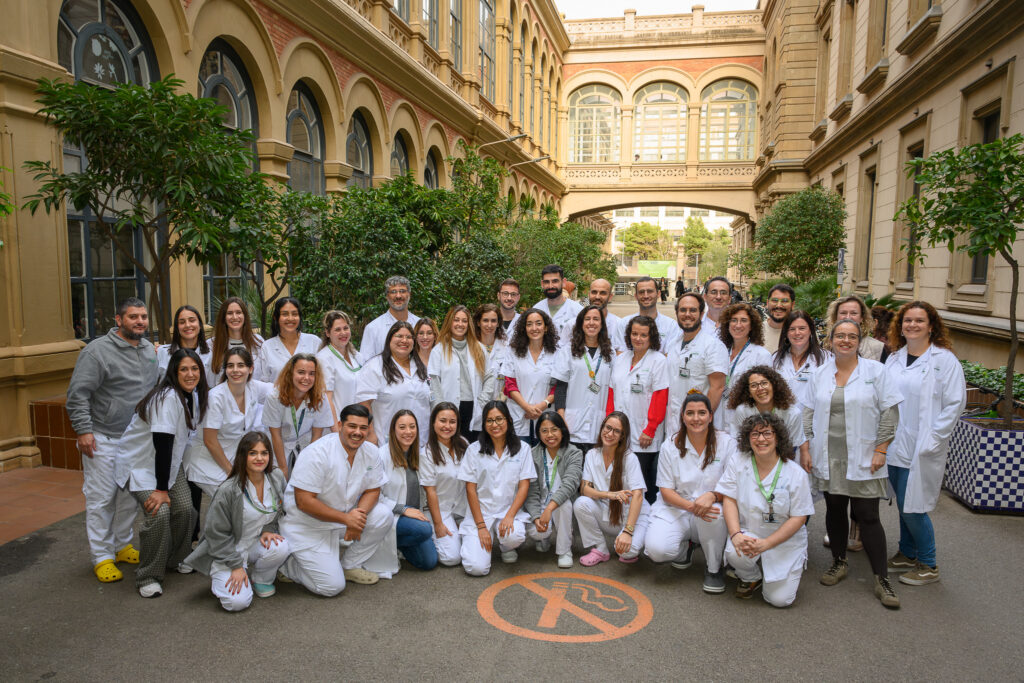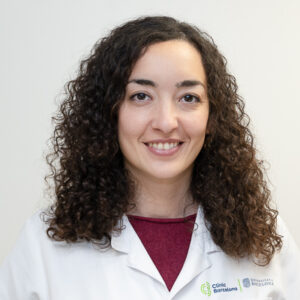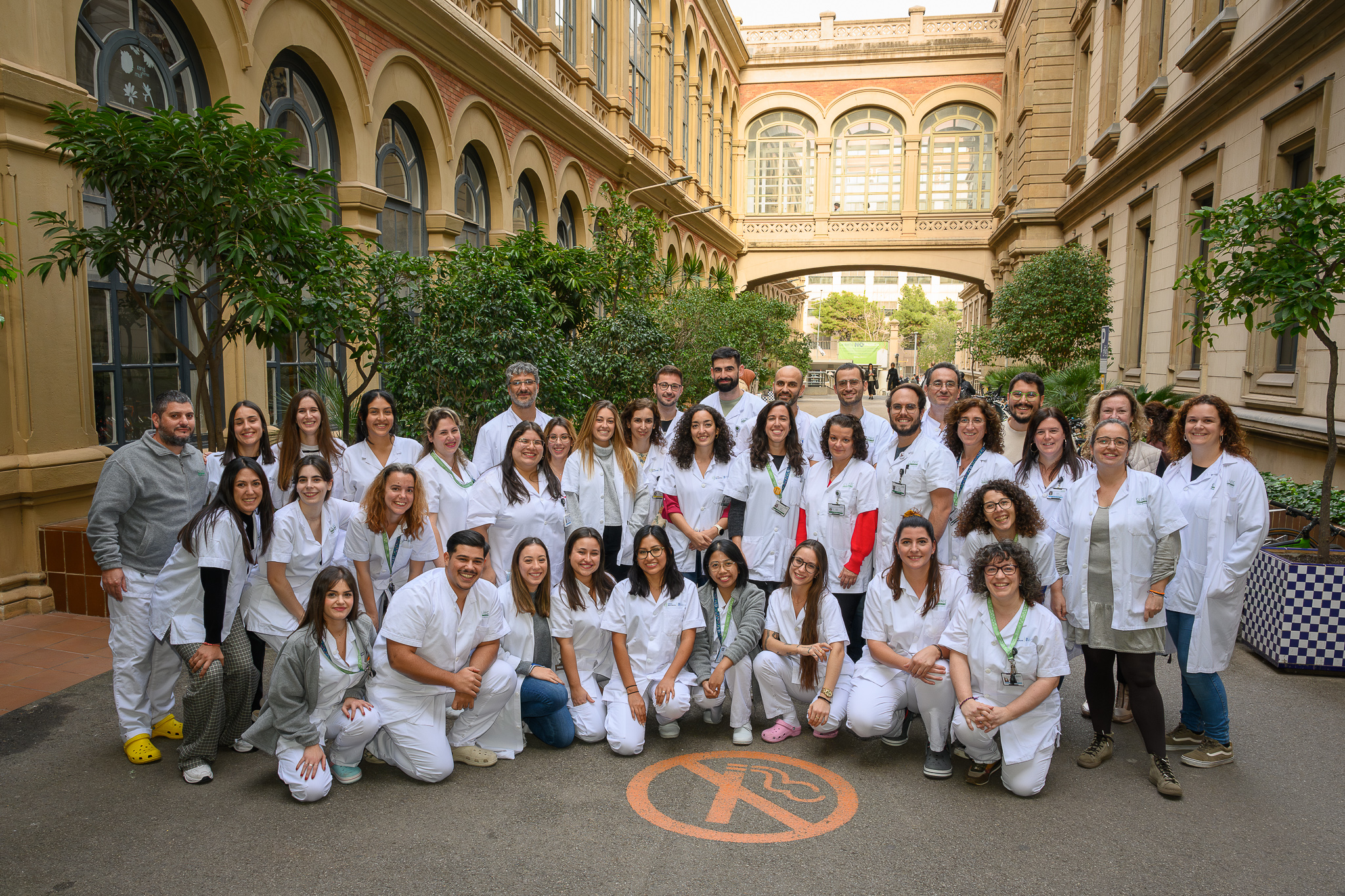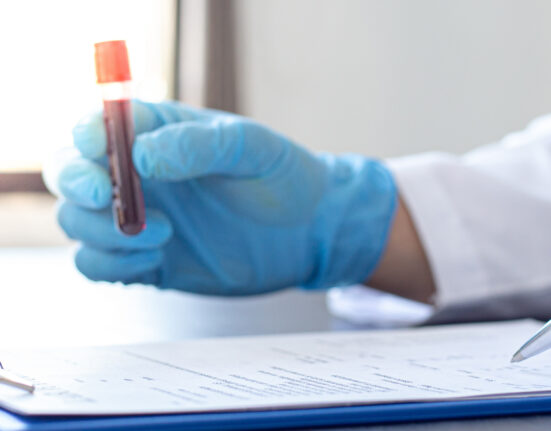While the US relies on centralized, commercial CAR-T manufacturing, Spain is taking a different approach. At Hospital Clínic de Barcelona, point of care (POC) manufacturing delivers personalized cell therapies on-site, cutting delays and expanding access.
BY Leah Sherwood
For the past several years, chimeric antigen receptor (CAR) therapies have been the go-to treatment for certain blood cancers, and rightly so. Where patients once had no viable options, there are now in many cases safe and effective therapies available.
Yet this clinical breakthrough brought new challenges, particularly in manufacturing. Unlike traditional drugs, CAR-T cells must be made for each patient. In the United States, the process typically involves collecting the patient’s cells, sending them to an FDA-approved specialized facility for modification, and shipping the final product back for infusion. Each step adds time, complexity, and cost.1
To address these challenges, investigators are exploring alternatives to centralized manufacturing to move CAR-T production closer to the patient, with the goal of lowering costs and reducing delays in treatment.2
One alternative is a decentralized model called point-of-care or place-of-care (POC) manufacturing, under which CAR-T cells are manufactured on-site at hospitals instead of at remote

commercial facilities.3,4
“In simple terms, POC manufacturing is preparing the cellular therapy at the same institution where the patient is admitted for treatment,” explained Magdi Elsallab, MD, PhD, the director of both the process development and the cellular therapy and transplantation laboratories at Massachusetts General Hospital Cancer Center in Boston
After being introduced to stem cell research during his residency at Mansoura University in Egypt, Dr. Elsallab became fascinated by how these therapies are translated into real products. Feeling that he needed a deeper understanding of both CAR-T cell theory and practice, he decided to go back and pursue his doctoral degree. That experience, and the gaps in care he saw firsthand, shaped how he views the field today.
Faster production for faster patient treatment
The US manufacturing process is slow and fragmented, Dr. Elsallab explained, making it difficult for clinicians to treat patients.

“The current model for making quality cell therapies is limiting,” he said. “It’s not unlocking the full potential for cell therapy, and it limits access to these transformative therapies.”
Wait times, logistical hurdles, and production constraints continue to delay treatment for patients who may not have time to wait. In some cases, disease progression or death occurs before CAR-T therapy can be delivered.5
“We can and should do better,” Dr. Elsallab said, pointing to commercial manufacturing processes that still rely on outdated infrastructure.
On average, manufacturing takes four to six weeks, with little flexibility to shorten the timeline. Delays often begin even before cell collection.
“Patients can wait three weeks just to schedule apheresis,” said Nirav Shah, MD, an associate professor at the Medical College of Wisconsin Cancer Center (MCW), where investigators are developing academic CAR-T programs and testing ways to bring production closer to the patient. “And that’s before the cells are even modified.”
Pioneering POC manufacturing in the US
At MCW, Dr. Shah and his team are working on an early-stage POC program that focuses on manufacturing CAR-T cells on-site. The program aims to reduce the time from cell collection to infusion by eliminating the need to ship cells to third-party facilities. The cells are collected, modified, and administered within MCW, under FDA regulated and institutionally approved clinical protocols.6
Although still in development, the model is part of a growing effort in the US to incorporate decentralized manufacturing strategies that can improve access and responsiveness. The program has managed to deliver vein-to-vein therapies in as little as eight days, according to Dr. Shah.
“We’re able to manufacture the product on-site and administer it without delay,” he said. “Patients receive a fresh product within eight days, which is critical for those with aggressive disease.”
The MCW team has been working on POC manufacturing since 2017. By keeping the entire process under one roof, they can apherese patients on-site, immediately transport the cells to their manufacturing facility, and reinfuse the modified CAR-T cells without delay. “In fact, we do it so quickly now that patients start lymphodepletion during the manufacturing process and actually receive a fresh product back,” he said.
For patients with rapidly progressing lymphoma, this speed can make a critical difference. “We’re actually able to get a product to them as quickly as their clinical indication needs it,” he said.
The POC model also enables faster innovation, according to Dr. Shah.
“We do this in the context of clinical trials,” he said. “We can quickly test new manufacturing systems, new combinations of treatments, different doses of CAR-Ts, or entirely new CAR-T constructs.”
Having on-site manufacturing capacity allows the team to design and launch trials more quickly and helps move the research forward, said Dr. Shah, noting that that several academic programs have gone on to partner with industry after initiating early CAR-T development, helping advance those therapies toward FDA approval.
As institutions begin to explore POC models at multiple sites, demonstrating consistency across locations for regulatory approval becomes paramount.
Dr. Shah gave the example of manufacturing CAR-T cells at different institutions, such as the Medical College of Wisconsin and the University of Texas MD Anderson Cancer Center. If one patient’s cells are produced at one site and another’s at the other, investigators must demonstrate that the resulting therapies are comparable.
“You have to be able to show comparability from site to site and show that no matter where it is made, you’re making it in specification and the patients are getting a safe and effective cellular therapy product,” Dr. Shah explained. “That is important. We do want to show that.”
POC regulatory frameworks in Europe and the US
Europe might have a leg up in developing multiple POC sites given the US regulatory structure, according to Dr. Shah.
“From a regulatory standpoint, [Europe] might have a little bit more latitude in having a point of care system,” Dr. Shah said. “That doesn’t mean it won’t happen in the US. I just think that it’s going to take a lot of effort upfront to demonstrate that the [CAR-T] product is identical.”
This level of validation might be unrealistic for most academic institutions, since it demands time and resources.
Dr. Elsallab noted that the current US regulatory framework “does not fully suit or fit the POC model,” since it was built around centralized, industrial-scale manufacturing.
He explained that scaling such models across multiple sites would require “tedious” comparability studies and revalidation at each location, making widespread adoption difficult. As a result, expanding POC systems in the US remains a significant challenge.
In Spain, however, a nationally approved POC model is already in place.
Hospital Clínic de Barcelona
Hospital Clínic de Barcelona in Spain developed its own CAR-T products and received hospital exemption approval,7 a regulatory designation under European law*. Granted by Spanish national authorities, this exemption allows the hospital to produce the treatment on-site as long as it’s used for a specific patient, led by a physician, and not for profit.
Leticia Alserawan, PhD, a pharmacist and immunologist in the hospital’s immunotherapy unit, oversees the manufacturing of ARI-0001 and ARI0002h.8 (The prefix ARI honors Ari Benedé, who died of ALL at the age of 19. The ARI Project, founded in her memory, provided the impetus and financial support to help develop these treatments.)9

“We started with ARI-0001, [varnimcabtagene autoleucel] an anti-CD19 CAR-T for acute lymphoblastic leukemia,” Dr. Alserawan said. “After that, the IDIBAPS [the August Pi i Sunyer Biomedical Research Institute]research group developed ARI0002h [cesnicabtagene autoleucel], an anti-BCMA CAR-T for multiple myeloma.” She added that a third CAR-T, ARI-0003, is now in clinical trials for lymphoma patients and they are working on including multiple manufacturing sites across Spain.
ARI-0001 is part of the European Medicines Agency’s Pilot for Academic and Nonprofit Developers of Advanced Therapy Medicinal Products (ATMP),10 which was launched to help institutions such as hospitals and universities bring their own treatments through the European Union-wide approval process. ARI-0001 was the first therapy accepted into the program, which offers additional regulatory guidance and flexibility to support noncommercial developers.

Under Spain’s hospital exemption pathway, the Hospital Clínic de Barcelona, which is affiliated with the University of Barcelona and the IDIBAPS research institute, is approved to manufacture and administer ARI-0001 and ARI0002h at its treatment clinic.
“This means we can treat these patients here in our center,” Dr. Alserawan said. “The patients are tested and come to our hospital for the entire process, so usually it is a bit faster.” Dr. Alserawan described the typical timeline for ARI-0001 production as one month with some cases stretching to as long as two months.
“From the moment the patient is selected to the moment they are treated, the process can take one to two months,” Dr. Alserawan said. “Manufacturing usually lasts seven to 12 days, followed by another one to two weeks for quality control testing before the product is released.”
ARI0002h is manufactured at two different centers, Hospital Clínic de Barcelona and Clinica Universidad de Navarra, and patients from seven centers across Spain, which participated in the clinical trial, are being treated. For ARI-0001, two manufacturing sites, Hospital Clinic Barcelona and Hospital Sant Joan de Deu, have also received approval after comparability data from both sites were submitted to the Spanish Regulatory Agency.
Dr. Elsallab said that the model in Spain demonstrates that the POC model can be successful in bringing treatments to patients, “not in a better or worse way, but in a different way.”
Can multiple models coexist?
There is room for both centralized and POC manufacturing, depending on the disease context, infrastructure, and available support, according to Dr. Shah. He noted that some therapies may continue to rely on large-scale centralized production, while others would benefit from more localized, rapid delivery.
“There is the space where you can have some indications that can be targeted by the POC manufacturing and other indications where the centralized model will be the superior model,” he said, adding that not all healthcare systems are equipped to support centralized manufacturing, particularly in resource-limited settings.
Embracing these alternatives could help lower costs and expand global access, according to Dr. Shah.
“This will help make things like cell therapy cheaper. It will also allow CAR-T to be globalized,” Dr. Shah said. “Places like India or China will not be able to send their cells to the US or Europe for manufacturing. If we want to offer this therapy in an equitable fashion to people across the world, we’re going to have to embrace these alternative manufacturing models.”
Dr. Elsallab agreed, noting that flexible use of models tailored to different environments will be critical to expanding global access to these much-needed therapies.
“I feel that the best approach is to support all the models equally and try to push innovation further,” he said.
Leah Sherwood is a writer in Los Angeles.
References
- Elsallab M, Maus MV. Charting the course for CAR T-cell manufacturing. Blood Adv. 2024;8(23):6131-6132. doi:10.1182/bloodadvances.2024014653
- Urbano-Ispizua Á, Shah NN, Kekre N. Point-of-care CAR T manufacturing solutions: can 1 model fit all? Blood Adv. 2024;8(23):6133-6136. doi:N
- Shah M, Krull A, Odonnell L, de Lima MJ, Bezerra E. Promises and challenges of a decentralized CAR T-cell manufacturing model. Front Transplant. 2023;2:1238535. 2023. doi:10.3389/frtra.2023.1238535
- Orentas RJ, Dropulić B, de Lima M. Place of care manufacturing of chimeric antigen receptor cells: Opportunities and challenges. Semin Hematol. 2023;60(1):20-24. doi:10.1053/j.seminhematol.2023.01.001
- Ahmed N, Wesson W, Mushtaq MU, et al. “Waitlist mortality” is high for myeloma patients with limited access to BCMA therapy. Front Oncol. 2023;13:1206715. 2023. doi:10.3389/fonc.2023.1206715
- MCW’s CAR T-cell lab helps scientists bring lifesaving therapies to patients with blood cancers. Accessed April 14, 2025. https://cancer.mcw.edu/stories/mcws-car-tcell-lab-helps-scientists-bring-lifesaving-therapies-to-patients-with-blood-cancers
- The AEMPS (Spanish Association of Employers) authorizes the CAR-T ARI-0001 from Hospital Clínic for patients with acute lymphoblastic leukemia. Accessed April 2, 2025. https://www.aemps.gob.es/informa/la-aemps-autoriza-el-car-t-ari-0001-del-hospital-clinic-para-pacientes-con-leucemia-linfoblastica-aguda/?lang=en
- Green light for ARI0002h CAR-T developed by Clínic-IDIBAPS for patients with multiple myeloma. Accessed April 2, 2025. https://www.clinicbarcelona.org/en/news/green-light-for-ari0002h-car-t-developed-by-clinic-idibaps-for-patients-with-multiple-myeloma
- Premiere of the documentary ‘ARI, a story of love and life’, about how the CAR-T became a reality at the Clínic. Accessed April 12, 2025. https://www.clinicbarcelona.org/en/news/premiere-of-the-documentary-ari-a-story-of-love-and-life-about-how-the-car-t-became-a-reality-at-the-clinic
- EMA pilot offers enhanced support to academic and non-profit developers of advanced therapy medicinal products. Accessed April 13, 2025. https://www.ema.europa.eu/en/news/ema-pilot-offers-enhanced-support-academic-and-non-profit-developers-advanced-therapy-medicinal-products
*Defined under European Regulation (EC) 1394/2007, Directive 2001/83/EC and Regulation (EC) 723/2004, provided by Leticia Alserawan.






